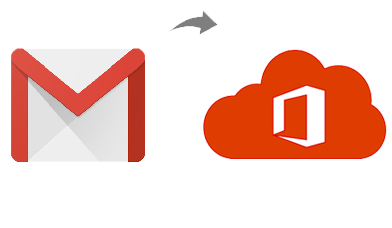In the fast-paced world of business and technology, companies often find themselves at a crossroads when it comes to choosing the right productivity and collaboration suite. Google Workspace (formerly G Suite) and Microsoft 365 (formerly Office 365) are two of the most popular options available today. While both offer a range of powerful tools and features, some organizations would like to know how to switch from Google Workspace to Microsoft 365. In this blog, we’ll delve into the transition process, explore the reasons behind this migration, solution for doing this task.
Overview of Google Workspace & Microsoft 365
Google Workspace is a cloud-based suite of productivity and collaboration tools developed by Google. It includes applications such as Gmail, Google Docs, Google Sheets, Google Slides, Google Drive, and Google Meet. These applications are designed for real-time collaboration and have become the go-to choice for many businesses looking for cloud-based solutions. Google Workspace offers a familiar user interface and seamless integration with Google’s ecosystem.
Microsoft 365 is another cloud-based productivity suite that encompasses a variety of applications, including Outlook, Word, Excel, PowerPoint, OneDrive, and Teams, among others. These applications have long been a staple in the corporate world, and Microsoft 365 offers extensive capabilities for productivity, communication, and collaboration. Microsoft’s suite is renowned for its robust security features and enterprise-grade solutions.
Why Users Switch from Google Workspace to Microsoft 365
- Compatibility with Legacy Systems – One of the primary reasons organizations consider switching to Microsoft 365 is compatibility with legacy systems. Many businesses have a deep-rooted history with Microsoft Office products, making a transition to Microsoft 365 a more seamless process. Microsoft’s suite allows users to maintain their existing workflows and document formats, eliminating potential disruptions in daily operations.
- Robust Security Features – Microsoft 365 is often preferred by organizations that prioritize security and compliance. It offers advanced security features like data loss prevention, encryption, and identity management, which are crucial for businesses dealing with sensitive data. Microsoft’s focus on security makes it an attractive choice, especially for industries with strict regulatory requirements.
- Unified Communication and Collaboration – Microsoft Teams, a core component of Microsoft 365, has emerged as a powerful tool for communication and collaboration. Users can conduct video conferences, chat, and share files seamlessly within a single platform. This integrated approach simplifies communication and streamlines teamwork.
- Advanced Data Management and Storage – Microsoft 365 provides more extensive data management and storage capabilities through OneDrive and SharePoint. This is particularly advantageous for businesses with large data requirements or those that need to maintain complex document structures.
- Enterprise-Grade Support and Services – Organizations that require comprehensive support, service level agreements (SLAs), and a more traditional approach to customer service may find Microsoft 365’s enterprise-level services more suitable. Microsoft has a long-standing reputation for providing extensive support to its clients.
How to Switch from Google Workspace to Microsoft 365 with Advanced Solution
Switching from Google Workspace to Office 365 can be a crucial decision for businesses, and the migration process needs to be smooth and efficient. To aid in this transition, CubexSoft offers a Gmail Backup Tool designed specifically to facilitate the migration of data from your Google Workspace account to Office 365. Let’s explore how this tool works and the key features that make it a reliable choice for the migration process. It is designed to handle various types of data, including emails, and documents, ensuring that your organization’s vital information is securely transferred to the new platform.
Key Features of CubexSoft Gmail Backup Tool
- Comprehensive Data Migration – This tool allows you to migrate a wide range of data, including emails, and documents, ensuring a complete transition from Google Workspace to Office 365.
- User-Friendly Interface – The software offers an intuitive and user-friendly interface, making it accessible for both IT professionals and non-technical users. You don’t need to be a migration expert to use this tool effectively.
- Selective Data Migration – The Tool provides the option to select specific data to migrate. This flexibility allows you to transfer only the data that is essential, reducing unnecessary data clutter in your Office 365 environment.
- Data Filtering and Mapping: You can apply filters to migrate data based on specific criteria, such as date ranges or labels. Additionally, the tool offers mapping options for source and destination accounts, ensuring data is organized correctly in Office 365.
- Data Integrity and Security – The Software prioritizes data integrity and security during migration. It ensures that data is transferred securely and accurately to Office 365, minimizing the risk of data loss or corruption.
- Batch Migration – The tool supports batch migration, allowing you to migrate multiple user accounts simultaneously. This is particularly valuable for businesses with multiple users or large data volumes.
- Preservation of Folder Hierarchy – Folder structures and hierarchies are retained during the migration process, maintaining the organization of your data in Office 365.
- 24/7 Customer Support – It provides round-the-clock customer support to assist with any questions or issues that may arise during the migration process.
Conclusion
The Gmail to Microsoft 365 Tool offers a reliable and efficient solution for businesses looking to switch from Google Workspace to Office 365. Its user-friendly interface, comprehensive data migration capabilities, and focus on data integrity make it a valuable choice for a smooth and successful transition. It can significantly simplify the often complex process of moving from one productivity suite to another, ensuring that your organization’s data is seamlessly transferred to Office 365.







